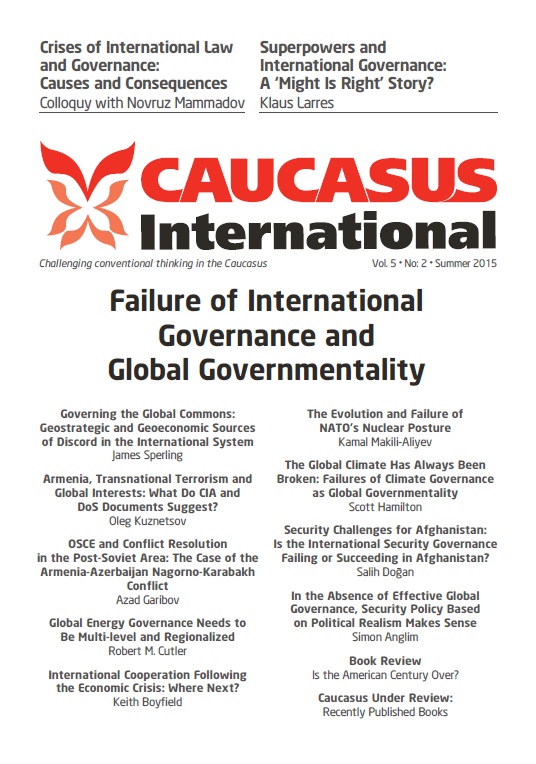Security Challenges for Afghanistan: Is the International Security Governance Failing or Succeeding in Afghanistan?
The end of 2014 marked the conclusion of the United States’ longest war, at least in the sense of its role as a direct combatant. The military intervention in 2001, continued as a NATO mission, sought to disrupt, dismantle, and defeat terrorist and insurgent groups in Afghanistan. The international community withdrew most of their troops and left only 13,500 non-combatant soldiers under the new NATO mission. Named the Resolute Support Mission, the mission is designed to train, advise and assist the Afghan National Security Forces. However, the number of troops and their non-combatant role could pose difficulties in terms of Afghanistan’s security. An increase in the number of troops and a shift back into a combatant role might be needed in the near future. Obviously, it would be very optimistic to assume that the Afghan National Security Forces could overcome the terrorist threat on their own, given that this was impossible even with almost 150,000 NATO troops present in the country. With the Afghan forces fully responsible for security issues, 2014 became the bloodiest year since 2001. Moreover, the Islamic State (in Iraq and the Levant) moved beyond the Middle East and became active and operational in Afghan soil during this time. They began to carry out attacks in the country, which led the Islamic State and the Taliban to declare jihad against one another. Afghanistan’s current security situation has implications beyond its national borders; it is a trans-boundary security threat affecting Central Asian, South Asian and Middle Eastern countries. The situation now requires a common strategy from the international coalitions constituted to counter the Taliban and Islamic State, in order to fight these groups in the wider region.
Latest news
- 03/17/2020 Call for Submission: “Non-Alignment Movement and Its Perspective in International Affairs”. Deadline: 1 July 2020 2624 views
Popular articles
- 02/24/2020 The Role of Irredentism in Russia’s Foreign Policy 2535 views
- 02/24/2020 Construction of sub-national identity vis-à-vis parent state: Gagauz case in Moldova 2218 views
- 02/24/2020 The Conflict in Ukraine - The Geopolitics of Separatism and Divergent Identities (Commentary) 2072 views
- 02/24/2020 The Role of the Soviet Past in Contemporary Georgia 2044 views





